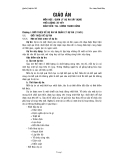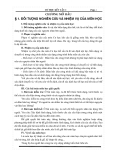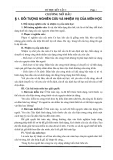Tài liệu Thư viện số
- Giáo trình SPKT (422 )
- Luận văn, luận án (2957 )
- Đồ án, khóa luận tốt nghiệp (10478 )
- Tài liệu tham khảo (1350 )
- BC nghiên cứu khoa học (1587 )
- Kỷ yếu hội thảo (12 )
- Tạp chí khoa học (62 )
- Luật (349 )
- Cơ khí chế tạo máy (2345 )
- Điện - Điện tử (4378 )
- Cơ khí động lực (1242 )
- Xây dựng - Kiến trúc (3233 )
- Thực phẩm, Môi trường (1083 )
- Công nghệ thông tin (3074 )
- Kinh tế - Quản lý (4138 )
- In - Truyền thông (382 )
- CN May - thời trang (832 )
- Nghệ thuật - Ẩm thực (1516 )
- Nông - Lâm - Ngư Nghiệp (763 )
- Y học - Sức khỏe (620 )
- Khoa học xã hội (3535 )
- Lịch sử - Địa lý - Du lịch (492 )
- Khoa học tự nhiên (2101 )
- Văn học (2585 )
- Ngôn ngữ (4289 )
- Khoa học ứng dụng (406 )
- Thông tin Tuyển sinh (61 )
- Thông tin -Thư viện (418 )
- Thể loại khác (1376 )
Danh mục TaiLieu.VN
- Mẫu Slide Powerpoint
- Kinh Doanh Marketing (39320)
- Kinh Tế - Quản Lý (30571)
- Biểu Mẫu - Văn Bản (123435)
- Tài Chính - Ngân Hàng (23744)
- Công Nghệ Thông Tin (56521)
- Tiếng Anh - Ngoại Ngữ (9738)
- Kỹ Thuật - Công Nghệ (44193)
- Khoa Học Tự Nhiên (27343)
- Khoa Học Xã Hội (43227)
- Luật - Kinh tế luật (6560)
- Văn Hoá - Thể thao - Du Lịch (71283)
- Y - Dược - Sức Khoẻ (83234)
- Nông - Lâm - Thuỷ sản (16418)
- Luận Văn - Báo Cáo (217024)
- Tài Liệu Phổ Thông (244133)
- Trắc Nghiệm Online (213578)
- Trắc Nghiệm MBTI
- Trắc Nghiệm Holland
Tall building design : Steel, concrete, and composite systems
Offering guidance on how to use code-based procedures while at the same time providing an understanding of why provisions are necessary, Tall Building Design: Steel, Concrete, and Composite Systems methodically explores the structural behavior of steel, concrete, and composite members and systems. This text establishes the notion that design is a creative process, and not just an execution of framing proposals. It cultivates imaginative approaches by presenting examples specifically related to essential building codes and standards. Tying together precision and accuracy - it also bridges the gap between two design approaches - one based on initiative skill and the other based on computer skill. The book explains loads and load combinations typically used in building design, explores methods for determining design wind loads using the provisions of ASCE 7-10, and examines wind tunnel procedures. It defines conceptual seismic design, as the avoidance or minimization of problems created by the effects of seismic excitation. It introduces the concept of performance-based design (PBD). It also addresses serviceability considerations, prediction of tall building motions, damping devices, seismic isolation, blast-resistant design, and progressive collapse. The final chapters explain gravity and lateral systems for steel, concrete, and composite buildings -- Publisher's description
Từ khóa: Building, Iron and steel, Composite construction, Concrete construction, Tall buildings, Tall buildings -- Design and construction
18 p thehoangthk 17/08/2020 686 1
Bạn đang xem trang mẫu tài liệu này.







